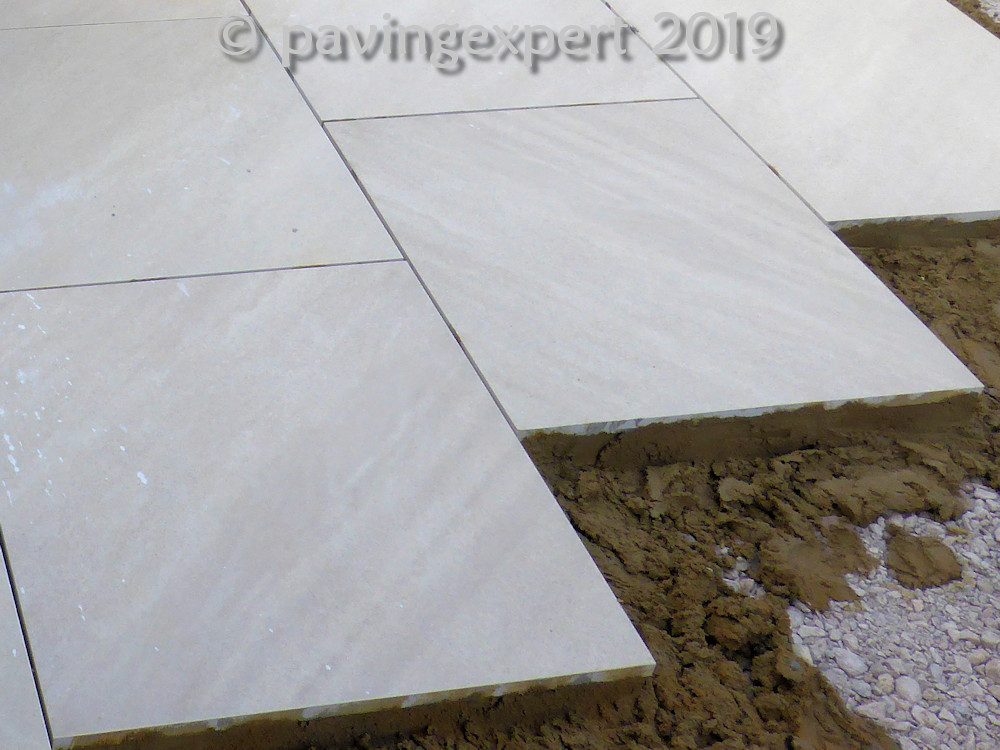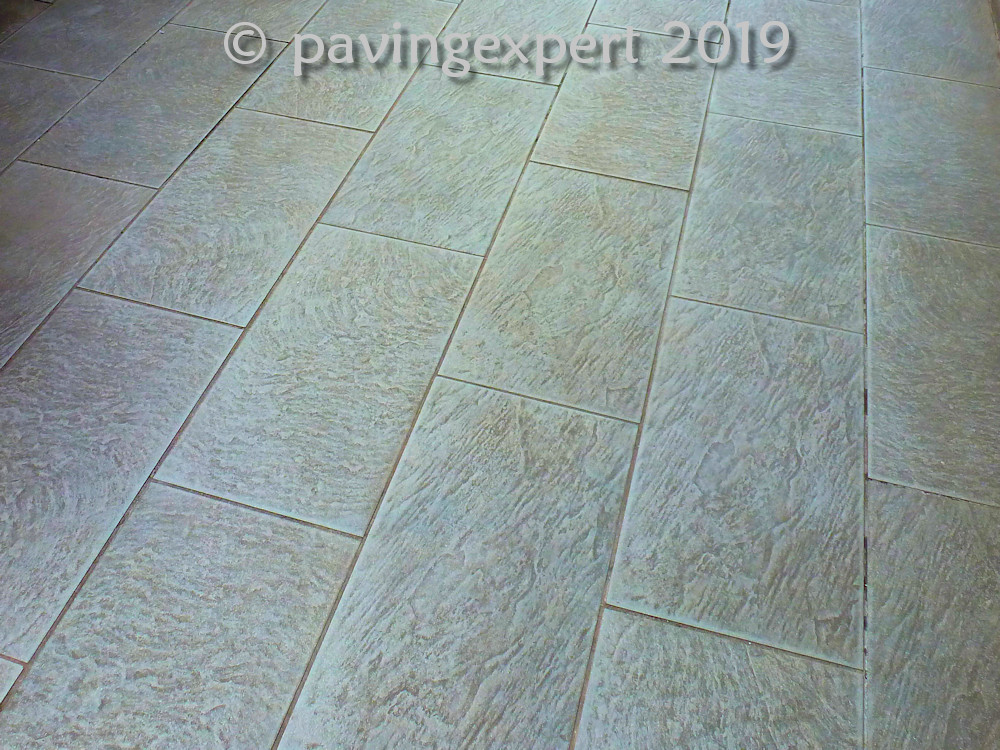Introduction:
The biggest area of growth in paving products within the British market over the last few years has been with ‘Porcelain’ paving.
And such levels of growth inevitably generates enormous competition, which, at its best, encourages better products and greater choice, but, its dark side is a race-to-the-borttom on cost, with cheaper and shoddier products being imported in an attempt to separate the bargain-seeker from their money.
So: how can we spot what is a genuine quality porcelain product, and what should we avoid like the plague?
Slip Resistance:
If there’s widespread disagreement about the difference between porcelain and ceramic paving , then that pales into insignificance compared to the raging row about slip resistance, what it means, whether it’s of any value, and what is actually required.
Part of the problem stems from the fact that the slip resistance values often stated by suppliers were developed for porcelain and ceramic tiling when used indoors. There doesn’t seem to be any standardised test for this form of surface when used outdoors.
There are some references to ‘tiles’ being used in what we might think of as outdoor areas, but these references are regarded as ‘useful extras’ to a far more comprehensive assessment of what’s required of porcelain/ceramic surfaces in a wide range of internal environments, rather than invaluable guidelines, and so their relevance is debatable.

Even how results are reported is contentious, with two main ‘measurements’ used: R-values and A/B/C ratings .
R-values
R-values are derived from a pendulum Coefficient Of Friction (COF) test, similar to that used with other paving materials. The Pendulum Test Value (PTV) is equated to a specific R-value, with the slippier surfaces (low PTV) being listed as lower R-values (say, R9) while higher PTVs result in higher R-values (say, R13).
As a very, very general guide, R13 equates to a PTV (which is a slip resistance value [SRV] when testing paving materials) of around 70, so about the same as flame-textured yorkstone or good quality concrete block paving. R9 is roughly equivalent to a worryingly low PTV/SRV of 12-18, which is actually lower than is rated as safe for use in surfaces likely to be damp.
Again, very, very, very roughly, never use anything with a R-value of 10 or less, and, whenever possible, look for a minimum of 12 or even 13. Yes, I know lots of ‘tiles’ are rated R11, but that is right on the borderline. Opt for R12 if you can.
A/B/C rating
The A/B/C rating is based on a German industrial standard (DIN). German is not my strongest language, but, relying on friends over there, it seems that this rating system is really intended for use in wet areas (so, swimming pools, kitchens, bathrooms, etc.) and that anything with an A rating is, to paraphrase, potentially a death trap. Look for tiles with a C rating as, apparently, this is close to a SRV or around 45, which is pretty close to the minimum we can get away with outdoors in Britain and Ireland.
Rectification:
The best porcelain manufacturers are set-up to produce tiles that, by the time they come out of the kiln, are slightly oversize. Because porcelain (and other ceramics) are made from natural materials and are then subjected to the only-just-controlled firing process in a very long kiln, there can be some variation in just how much shrinkage will occur during this stage of manufacturing.
If you put, say, a 650x650mm tile in the entrance to the kiln, what emerges might only be, say, 595x595mm…or it could be 597x594mm or 598x596mm or….you get the picture. So, manufacturers wanting a 600x600mm product may well put in a, say, 700x700mm biscuit , which could emerge as, say, 605x604mm, which, once it has cooled down, is then trimmed down, sized , or 'rectified' to be precisely 600x600mm.

Now, one significant manufacturing cost that can be "rectified" is to aim to produce ‘near-as-dammit’ sized tiles and omit the rectification stage.
Unrectified units are landing on our shores as part of the ‘race to the bottom’ that’s happening in an attempt to sell porcelain at the lowest possible price. Last year, I heard a significant importer boast that they’ll be selling at 16 quid/m² in 2019 "because they can". No attempt to justify selling unrectified shi…err….rubbish – all that matters is they’ll be cheaper than everyone else.
Unrectified tiles/flags may well be that bit cheaper, and it is, indeed, possible to ‘accommodate’ minor (1-3mm) size differences by opening or balancing joints , as we do with natural stone paving, but is this fair?
The customer often chooses porcelain/ceramic for its regularity, its uniformity: when variable width joints are introduced, a lot of that perceived homogeneity and style are lost.
And for the installer, having to spend time balancing joints, adjusting position of tiles/flags to achieve a reasonable looking finish reduces productivity, and therefore increases costs.
Banding:
Depending on the actual manufacturing process, some tiles/flags will be sent to market with a distinctive banded cross-section, sometimes referred to as the Liquorice Allsort look. The underside and top-face will often be a slightly lighter colour than the mid-section, which, you might think, doesn’t really matter as it’s only visible on the side faces (edges) so won’t be seen…unless you’re using such units to create step treads or wall copings.

Regardless of the aesthetics, there is a worry, only a small worry admittedly, that banded units are usually of a lower quality, and the banding results from inefficient or ineffective firing. The tile/flag is still fit for use, but if you’re paying good money, do you really want less-than-good paving?
